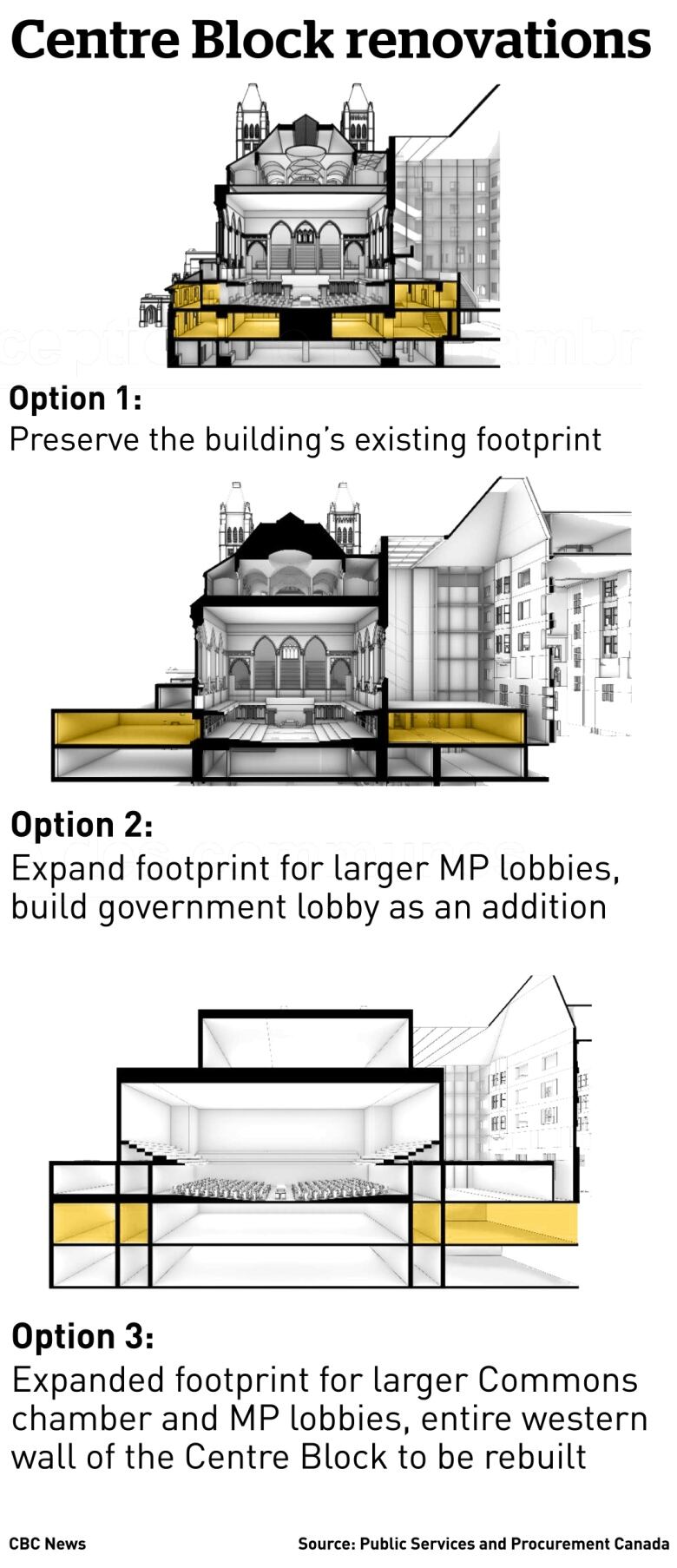MPs are being asked to make some important choices about the decade-long renovation of the Centre Block of Parliament Hill — choices that could have a significant impact on how Canadians experience the nation’s capital. But experts with knowledge of the project say MPs are not getting all the information they need to make those decisions.

MPs are being asked to make some important choices about the decade-long renovation of the Centre Block of Parliament Hill — choices that could have a significant impact on the House of Commons and how Canadians experience the nation’s capital.
But experts with knowledge of the project say MPs are not getting all the information they need to make those calls — and it’s still not clear who has the power to make final decisions that could reshape the most iconic piece of public real estate in Canada.
The project to restore and modernize Centre Block — which includes the House of Commons and Senate chambers, the Library of Parliament, offices for MPs and party leaders and the Peace Tower — is underway and will unfold over the next 10 years.
The project aims to upgrade the buildings’ seismic resilience, systems and security, and to make them more energy-efficient and accessible, all while preserving their heritage.
‘The theatre of our democracy’
“On a contemporary basis, I don’t think there is a more important construction project that’s happening in the country,” said Liberal MP and Chief Government Whip Mark Holland. “It’s a place where the theatre of our democracy has played out over the last 100 years.
“We’re making a decision now for the next 100 years. So it’s an incredibly important decision.”
But while the project has been in the works for years, MPs are only now starting to see what the final product could look like. They have a lot of questions — and some fear they’re not being shown the whole picture.
“So far, I have not been impressed by the level of information that’s been available,” said NDP House Leader Peter Julian. He’s a member of the powerful Board of Internal Economy (BOIE), one of the committees that received a presentation on the renovation plans at the end of February.
“The only way to ensure we’re not spending money on frills or a Cadillac version of the Centre Block renovation is to make sure that there’s full disclosure … as we make these decisions.”
The project’s cost and the potential for overruns have come up at both the Procedure and House Affairs committee (PROC) and the BOIE. The completed renovations to West Block, which included the temporary House of Commons, came in at $863 million — a good indication that the much larger Centre Block project is likely to go well over $1 billion.
Among the options MPs have been shown are some ways to expand the House of Commons chamber. It’s estimated that in 50 years, population growth could boost the number of MPs from the current 338 to 460.
There’s already a space crunch. Most MPs are used to sitting two-by-two in assigned seats with desks to hold their personal computers. Before the temporary move to the West Block last year, more desks were fitted into the Centre Block chamber by using theatre-style flip-up seats.

If the chamber’s size is not expanded, one possibility is for MPs to sit on long benches as MPs do in Westminster in London.
Two of the three options for a new chamber would result in an expanded building footprint, altering the symmetry between the two houses of Parliament. The most ambitious option calls for the removal of the western exterior wall of Centre Block and a much wider Commons chamber.

While many MPs are b

